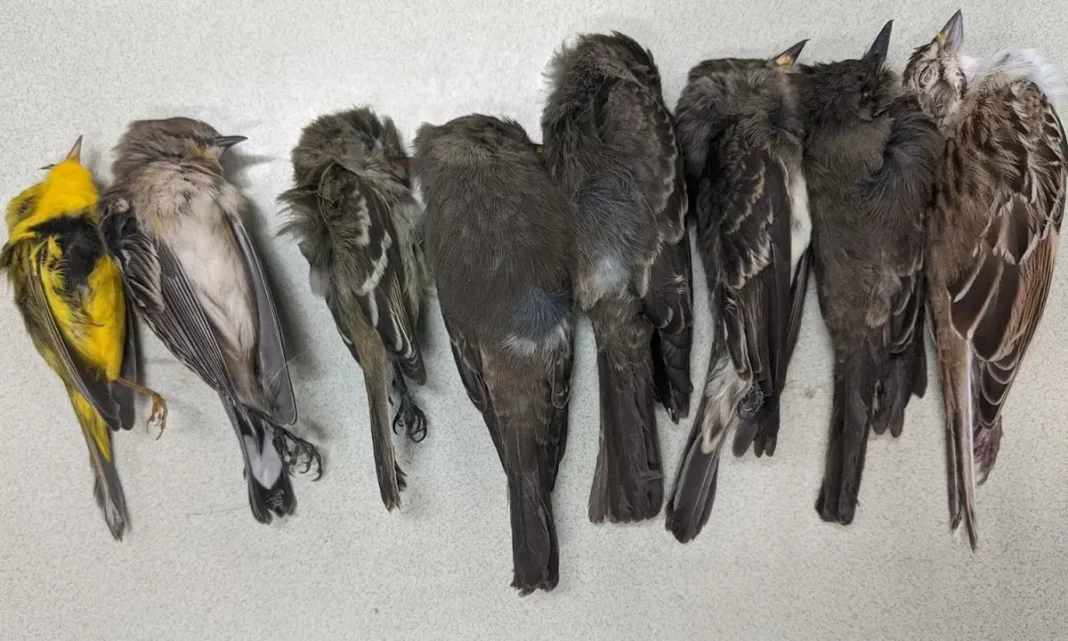In September 2020, the American Southwest experienced a horrifying scene ripped straight from a nightmare – a mass die-off of migrating birds, literally falling from the sky. Images and videos flooded social media, showcasing robins, swallows, buntings, warblers, and even hawks littering streets and backyards. This wasn’t a local event; reports poured in from hundreds of miles across the region, painting a disturbing picture of an avian apocalypse.
This phenomenon, eerily dubbed “raining birds” by news outlets, sent shockwaves through the scientific community and the general public alike. Tens of thousands of birds perished, leaving everyone searching for answers. What unseen force could cause such a devastating loss of life?
Join us as we delve deeper into the chilling mystery of the “raining birds”. We’ll explore the potential culprits behind this mass die-off, the ongoing scientific investigation, and the ecological impact this event had on the region. Was it extreme weather? A lack of food? Or something more sinister? Buckle up as we explore this fascinating yet unsettling avian enigma.
A Fall From Grace: Mass Die-Off of Migrating Birds in the Southwest (September 2020)
Imagine a crisp September morning in the American Southwest. The desert awakens, bathed in golden sunlight. But this seemingly ordinary day took a chilling turn in 2020. Across Arizona, New Mexico, and Texas, residents witnessed a scene straight out of a horror movie – a mass die-off of migrating birds, literally raining from the sky.
Thousands of birds, exhausted and lifeless, plummeted from the heavens. Images and videos flooded social media, showcasing a heartbreaking spectacle – robins, swallows, buntings, warblers, and even hawks, littering streets, parking lots, and backyards. This wasn’t a localized event; reports poured in from hundreds of miles across the region, painting a picture of a widespread avian apocalypse.
The phenomenon, eerily dubbed “raining birds” by news outlets, sent shockwaves through the scientific community and the general public alike. The sheer scale of the die-off – estimates suggest tens of thousands of birds perished – coupled with the suddenness of the event, left everyone searching for answers. What unseen force could cause such a devastating loss of life in the blink of an eye?
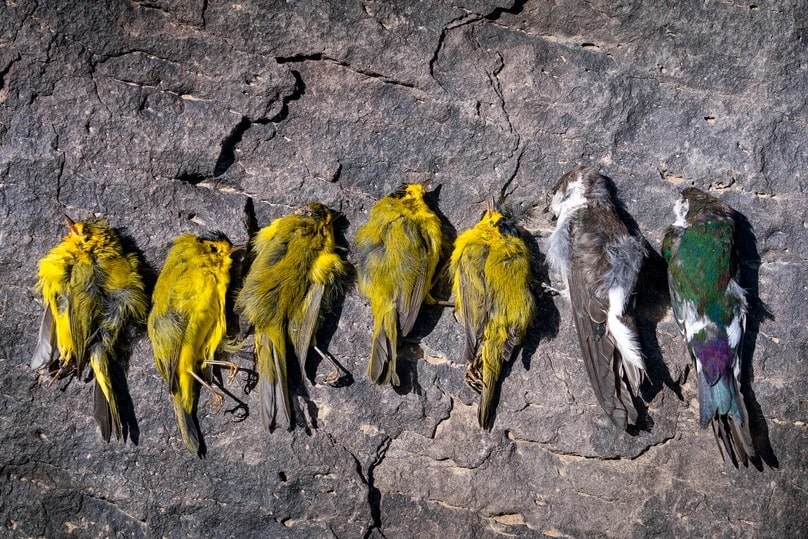
This event highlighted the delicate balance of nature and the interconnectedness of ecosystems. Migrating birds play a crucial role in maintaining ecological health, from seed dispersal to insect control. Their sudden disappearance raised concerns about the potential impact on the region’s environment.
The cause of this avian tragedy remained a mystery for months, sparking a flurry of investigations and scientific debate. Join us as we delve deeper into the “raining birds” phenomenon, exploring the potential culprits behind this mass die-off and the ongoing quest to understand this ecological puzzle.
Starving Mid-Flight: The Depleted Reserves Mystery
The initial shock of the “raining birds” phenomenon in the American Southwest of September 2020 subsided, but a new, more unsettling question arose: why? Autopsies performed on the fallen birds revealed a critical clue – depleted fat reserves. These migratory birds, known for meticulously building up energy stores before embarking on long journeys, were essentially flying on empty.
Imagine a marathon runner attempting a race after skipping breakfast. Their body simply wouldn’t have the fuel reserves needed to complete the distance. This analogy aptly describes the plight of the ill-fated birds. Their lack of fat meant they couldn’t sustain the demanding flight, leading to exhaustion and ultimately, death mid-migration.
But what caused these birds to be so malnourished? Several theories emerged, each with its own set of supporting evidence. One possibility centered on unfavorable weather conditions. Strong headwinds or storms could have significantly increased the energy expenditure of the birds during their flight, depleting their reserves faster than anticipated.
Another theory implicated a lack of food availability on their migration route. Changes in insect populations, crucial food sources for many migratory birds, could have left them with insufficient resources to refuel during their journey. This scenario highlights the interconnectedness of ecosystems – a decline in insect populations, potentially due to factors like pesticide use or habitat loss, can have cascading effects on other species.
The “raining birds” event also raised concerns about the potential impact of light pollution on bird migration. Migratory birds rely on specific stopover sites along their routes to rest and refuel Habitat Loss and Migratory Birds. Habitat loss due to deforestation, urbanization, or other factors can disrupt these critical resting points, leaving birds exhausted and vulnerable during their long journeys. While a definitive cause for the mass die-off remains elusive, the depleted fat reserves found in the birds point to a situation where they were simply unable to meet the energy demands of their migration.
While a definitive cause for the mass die-off remains elusive, the depleted fat reserves found in the birds point to a situation where they were simply unable to meet the energy demands of their migration. The ongoing investigation into this ecological mystery highlights the complex factors that can influence bird migration and the potential consequences of environmental disruption.
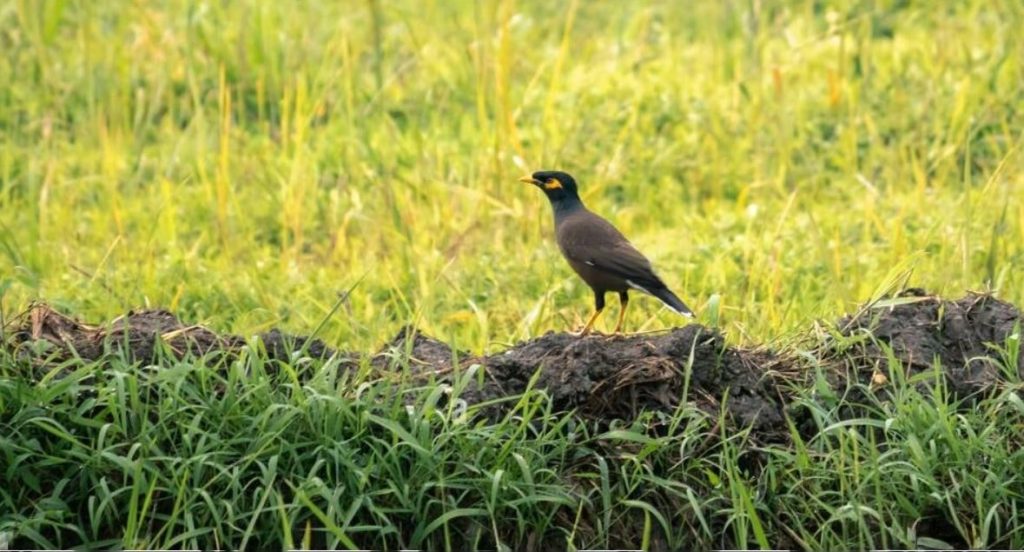
However, pinpointing the exact culprit behind the die-off is proving to be a challenge. To learn more about this ongoing scientific detective story, explore “What is Catatumbo Lightning: Earth’s Most Shocking Wonder!” and delve deeper into the fascinating world of bird migration.
Untangling the Cause: Theories Behind the Birdpocalypse
The “raining birds” incident of September 2020 in the American Southwest wasn’t just a horrifying spectacle; it was a scientific whodunit. Despite the initial shock subsiding, a chilling mystery remained – what caused this avian apocalypse? The lack of a single, definitive answer has fueled a multitude of theories, each attempting to explain the mass die-off.
One prominent theory centers on adverse weather conditions. Strong headwinds or unexpected storms can significantly increase the energy expenditure of migrating birds. Imagine a plane battling strong turbulence – it burns through fuel much faster. Similarly, these birds, already flying long distances, would have been forced to expend enormous amounts of energy just to stay airborne. Coupled with potentially depleted food sources along their route, this extra exertion could have pushed them past their physiological limits, leading to exhaustion and death in mid-flight.
Another theory points to a potential culprit closer to home – light pollution. Artificial lights at night can disrupt a bird’s internal compass, throwing them off course and forcing them to expend even more energy on navigation. This disorientation could lead them to veer off their designated migration route, wasting precious energy on unnecessary detours. Studies suggest that migrating birds rely on celestial bodies for navigation, and the proliferation of artificial lights throws a wrench into this natural system, potentially contributing to the “raining birds” phenomenon.
Beyond weather and light pollution, some researchers have explored the possibility of toxins playing a role. While not definitively linked to the 2020 die-off, the potential for exposure to insecticides or other environmental contaminants can’t be entirely ruled out. These toxins could weaken the birds’ immune systems or interfere with their metabolism, further compromising their ability to withstand the challenges of migration.
The truth behind the “raining birds” event likely lies in a complex interplay of these factors. Unfavorable weather conditions, coupled with limited food availability and disorientation from light pollution, could have created a perfect storm, pushing these already stressed birds to their breaking points. The ongoing investigation into this ecological mystery serves as a stark reminder of the interconnectedness of our planet and the potential consequences of human activities on wildlife populations.

Weather Woes or Toxic Trails? Exploring Possible Culprits in the Raining Birds Phenomenon
The chilling sight of “raining birds” across the American Southwest in September 2020 sparked a flurry of scientific investigations and public concern. While the initial shock subsided, a crucial question remained: what caused this mass die-off of migrating birds? The lack of a single, definitive answer has led researchers to explore several potential culprits, with two major theories taking center stage – unfavorable weather conditions and environmental toxins.
The weather theory focuses on the demanding nature of bird migration. These incredible journeys, spanning thousands of miles, require birds to be in peak physical condition. However, strong headwinds or unexpected storms can significantly increase the energy expenditure of migrating birds. Just imagine the plight of a small songbird battling gale-force winds – it’s akin to a human runner attempting a marathon in a blizzard. This extra exertion depletes their limited fat reserves much faster, leaving them vulnerable to exhaustion and starvation mid-flight.
The “raining birds” event coincided with reports of unusual weather patterns across the Southwest, potentially lending credence to this theory. Researchers are investigating the possibility that strong headwinds or unexpected storms forced the birds to expend more energy than anticipated, ultimately leading to their demise.
Another theory delves into the potential role of environmental toxins. While a definitive link hasn’t been established in the 2020 die-off, the possibility of exposure to insecticides or other contaminants can’t be entirely disregarded. These toxins could weaken the birds’ immune systems or disrupt their metabolism, further compromising their ability to withstand the rigors of migration. Imagine a marathoner competing with a fever – their performance would be significantly hampered. Similarly, exposure to toxins could have weakened the birds, making them more susceptible to the challenges of their journey.
The investigation into the “raining birds” phenomenon is ongoing, and the true cause may lie in a complex interplay of these factors. Unfavorable weather conditions, coupled with potential exposure to toxins, could have created a double whammy for these migrating birds. Further research is needed to determine the definitive cause, but the event serves as a stark reminder of the potential impact of human activities on wildlife populations.
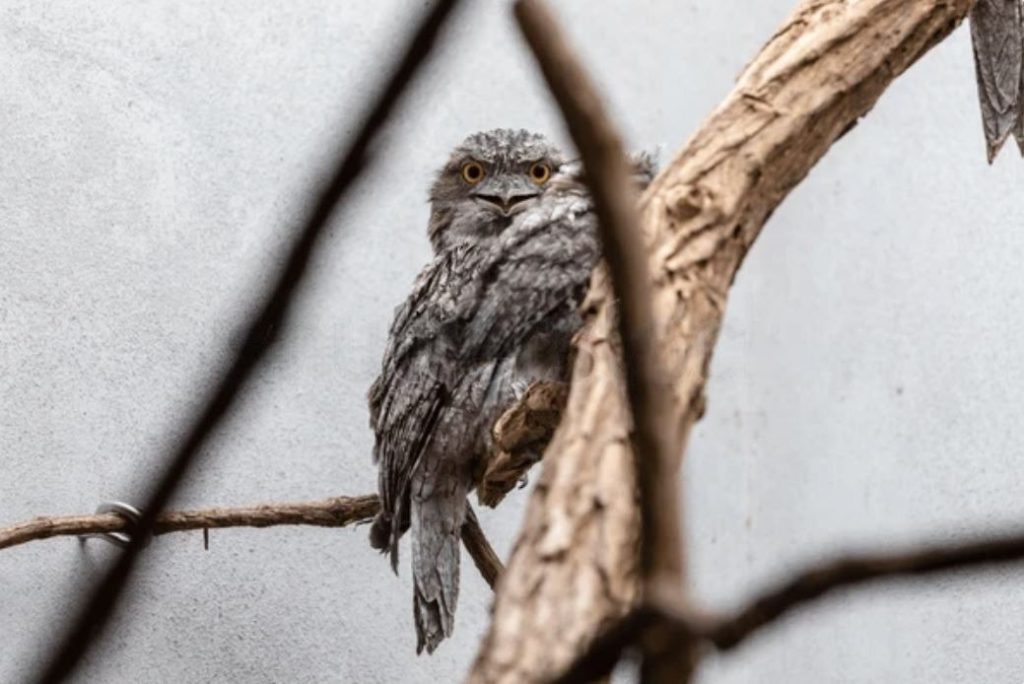
A Loss for the Ecosystem: Ecological Impact of the Raining Birds Phenomenon
The tragic spectacle of “raining birds” in the American Southwest of September 2020 wasn’t just a horrifying event for birdwatchers and nature enthusiasts. It also represented a significant loss for the region’s delicate ecological balance. Migratory birds play a crucial role in maintaining healthy ecosystems, and their sudden disappearance sent ripples through the food chain.
One of the primary concerns following the mass die-off centered on insect populations. Many migratory birds, such as warblers and swallows, are insectivores, meaning they play a vital role in controlling insect numbers. Their absence could lead to an upsurge in insect populations, potentially disrupting the delicate balance within the ecosystem. Imagine a garden overrun with caterpillars due to a lack of birds – this scenario highlights the potential consequences of a disrupted food chain following a “raining birds” event.
Another ecological concern involved seed dispersal. Many bird species, particularly those that feed on fruits and berries, play a vital role in spreading seeds across vast distances. This process helps in plant regeneration and ensures the health and diversity of plant communities. The loss of these avian seed dispersers following the “raining birds” phenomenon could have long-term implications for plant populations and overall ecosystem health.
Beyond the immediate impact on insect and plant life, the die-off could also have cascading effects on other animal populations. Predators that rely on birds as a food source, such as hawks and owls, might face food shortages. This disruption within the food chain can have a domino effect, potentially impacting the overall health and biodiversity of the ecosystem.
The full ecological impact of the “raining birds” event is still being studied, but it serves as a stark reminder of the interconnectedness of nature. Birds are not just beautiful creatures; they play a vital role in maintaining healthy ecosystems. Their loss can have significant consequences for the entire web of life. Further research is needed to understand the long-term ramifications of the die-off, but the event underscores the importance of protecting bird populations and their critical role in a healthy environment.
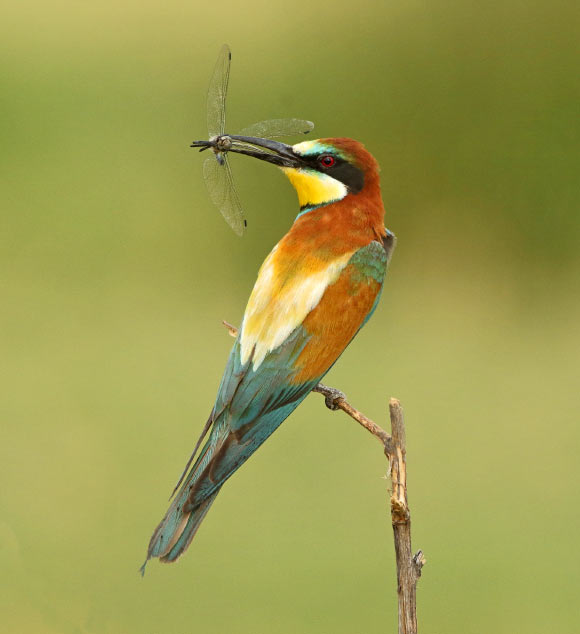
Avian Enigma: Lessons Learned and the Road to Prevention
The “raining birds” phenomenon of September 2020 in the American Southwest remains an avian enigma. Despite extensive research, the exact cause of this mass die-off continues to elude scientists. While the lack of a definitive answer is frustrating, the event has served as a stark wake-up call, highlighting the vulnerability of bird populations and the complex factors that can influence their survival.
One of the key lessons learned from the “raining birds” event is the importance of long-term monitoring of bird populations. By tracking bird migration patterns and population health over time, scientists can identify potential threats and take preventive measures. Imagine a doctor regularly monitoring your vitals – early detection of abnormalities allows for early intervention. Similarly, consistent monitoring of bird populations allows for the identification of potential issues before they escalate into a full-blown crisis like the “raining birds” event.
Another crucial takeaway is the need to address the environmental factors that may be contributing to bird die-offs. This includes mitigating the effects of climate change, which can lead to disruptions in weather patterns that birds rely on for migration. Additionally, promoting sustainable agricultural practices that minimize pesticide use can help reduce potential exposure to toxins for migrating birds. Finally, efforts to reduce light pollution, particularly along migration routes, could help birds navigate more effectively and conserve energy during their long journeys.
The “raining birds” event may not have a clear-cut solution, but it has sparked a renewed focus on bird conservation. By understanding the challenges birds face and implementing preventative measures, we can work towards ensuring a safer future for these feathered travelers. Citizen science initiatives that encourage birdwatching and reporting unusual sightings can play a valuable role in data collection and early detection of potential problems.
The avian enigma of the “raining birds” may linger, but the lessons learned offer a roadmap for a future where such tragedies become less likely. By prioritizing bird conservation efforts and fostering a healthier environment, we can ensure that the skies remain a vibrant canvas for these magnificent creatures for generations to come.

Frequently Asked Questions (FAQs)
1. What caused the raining birds phenomenon of 2020?
The exact cause of the raining birds phenomenon in September 2020 remains a mystery. However, several theories are being investigated, including unfavorable weather conditions, lack of food availability on migration routes, and potential exposure to environmental toxins.
2. What were the ecological impacts of the raining birds event?
The sudden loss of a large number of migratory birds can have significant ecological consequences. These birds play a vital role in controlling insect populations, dispersing seeds, and maintaining the overall health of ecosystems.
3. What can be done to prevent similar events from happening in the future?
Long-term monitoring of bird populations, addressing climate change and its impact on weather patterns, promoting sustainable agricultural practices, and reducing light pollution are some steps that can be taken to safeguard bird populations and prevent future tragedies.
4. How can I help with bird conservation efforts?
Citizen science initiatives that encourage birdwatching and reporting unusual sightings can be a valuable source of data for researchers. Additionally, supporting organizations dedicated to bird conservation and habitat protection is another way to make a positive impact.
5. Have there been any similar mass bird die-off events in the past?
Unfortunately, mass bird die-off events are not uncommon. Bird populations face various threats throughout the year, and large-scale die-offs have been documented due to factors like power line collisions, disease outbreaks, and oil spills. The raining birds phenomenon of 2020 served as a stark reminder of the vulnerability of these creatures.


